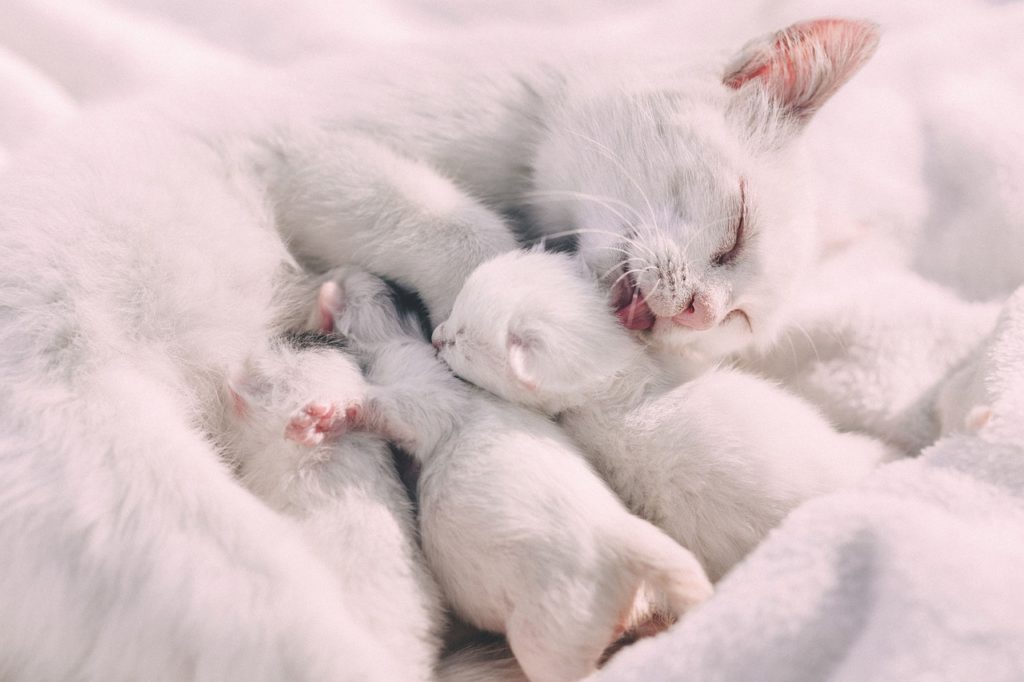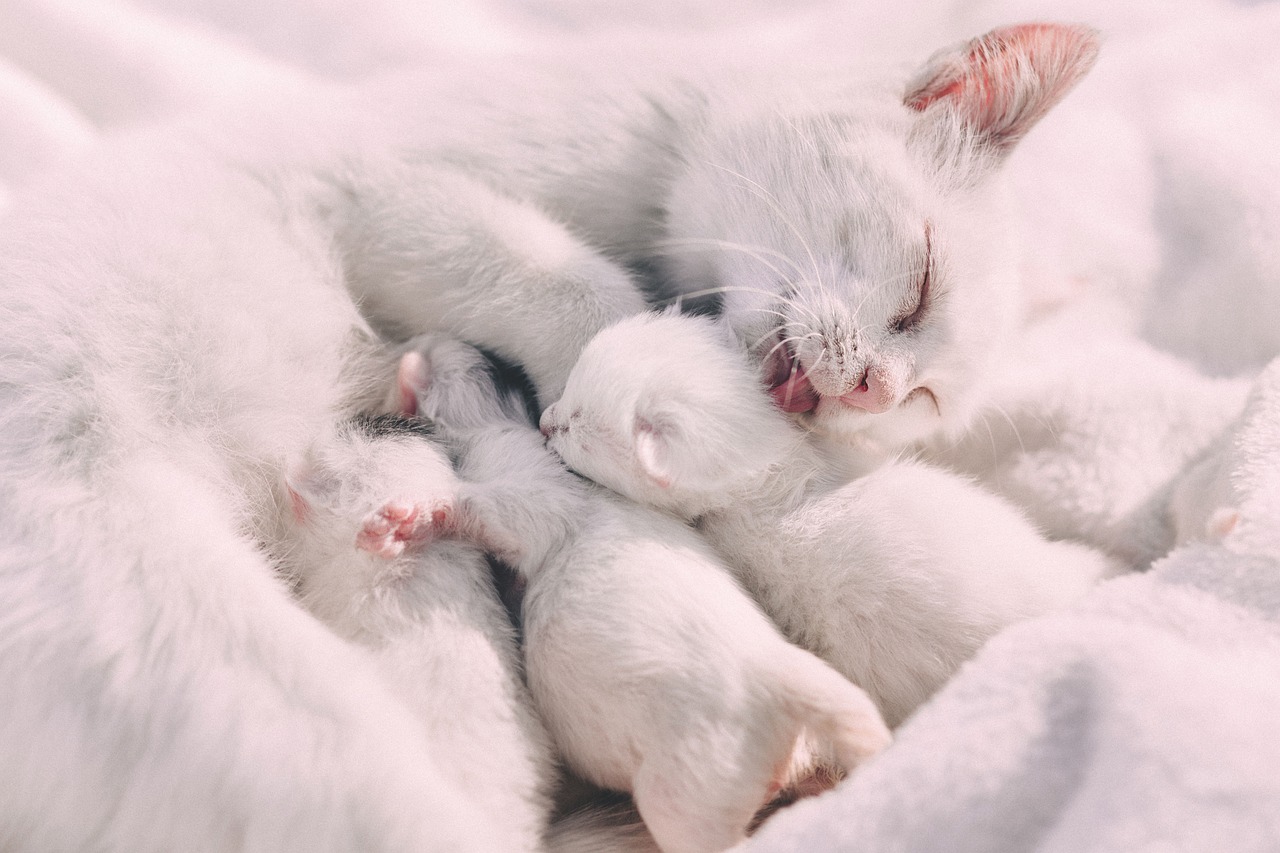Bringing home a litter of orphan kittens can be an exciting and rewarding experience. However, it also comes with great responsibility. As their caretaker, you are entrusted with their health, well-being, and growth development. In this comprehensive guide, we will provide you with essential tips and guidance on how to properly care for orphan kittens, ensuring their smooth transition into adulthood.

Photo by StockSnap on Pixabay
Keeping Kittens Warm: A Critical Factor
One of the most critical aspects of caring for newborn kittens is maintaining their body temperature. Kittens under 10 days old are unable to regulate their body heat, making it crucial for you to provide supplemental warmth. Failure to do so can lead to hypothermia and even death. Here are some effective ways to keep your kittens warm:
-
Heating Pad: Use a heating pad set on low and place it under half of the kitten enclosure. Cover the pad with a towel to prevent direct contact. Ensure there is a cool area available for the kittens to move to if they become too hot.
-
Snuggle Safe “Warming Disc”: This microwave-heated disc provides short-term warmth and requires frequent reheating.
-
Rice/Bean Sock: Fill a clean sock with uncooked white rice or white beans, tie a knot at the top, and microwave for 60 seconds. This makeshift heat source will require reheating every 2-3 hours.
Maintain the following temperatures in the kitten enclosure:
-
Birth-3 weeks: 85-88°F
-
Over 3 weeks: approximately 79°F
Feeding Orphan Kittens: The Right Nutrition

Proper nutrition is vital for the healthy growth and development of orphan kittens. It is crucial to use a specially formulated kitten milk replacement rather than human milk replacement, puppy milk replacement, or cow milk. Some recommended brands include KMR, Just Born, and Breeder’s Choice. Consult your veterinarian for specific recommendations.
The feeding schedule for kittens is based on their age and body weight. A general guideline is that a kitten should consume 8 milliliters of formula per ounce of body weight per day. Use a specifically designed nursing bottle with an appropriately sized nipple for feeding. Ensure the formula is warm, around 100°F, before offering it to the kitten.
When feeding, place the kitten on a warm towel on your lap, with their belly facing down. Gently ease the nipple into the kitten’s mouth, allowing them to taste the formula and initiate suckling. Never force the formula down their throats. If a kitten refuses to feed, ensure they are adequately warmed before contacting your veterinarian. Feed the kitten until they are comfortably full, avoiding an overly distended stomach.
Stimulating Elimination: A Necessary Step
Young kittens are unable to eliminate on their own during the first few weeks of life. It is essential to stimulate their urination and defecation after each feeding. This process resembles what a mother cat does for her kittens. To stimulate elimination, follow these steps:
-
Use soft cloths or cotton balls soaked in warm water.
-
Gently massage the kitten’s lower abdomen and anal area.
-
This stimulation should prompt the kitten to eliminate.
Normal kitten stools should have a toothpaste consistency and be yellow or mustard-colored. Urine should be clear, indicating proper hydration. If the kitten has diarrhea, you may be feeding too much or using a formula that is too rich. Try diluting the formula and contact your veterinarian if the issue persists.
Weaning and Litter Box Training

At around 4-5 weeks of age, you can begin introducing a small litter box to your kitten’s enclosure. To encourage litter box usage, place the kittens in the box and use their front paws to make a scraping motion in the litter. Additionally, if you catch a kitten eliminating somewhere else, gently pick them up and place them in the litter box.
Around this time, you can also start offering semi-solid foods. Wet kitten food and moistened kitten chow (with kitten formula) can be left in the enclosure for them to explore and experiment with. Remember to change the food frequently to prevent spoilage or elimination in the food.
While introducing solid foods, continue offering bottle feedings 4-5 times a day. Gradually, you will notice the kittens becoming less interested in the bottle as they eat more independently. By 6-8 weeks, the kittens should be weaned, mostly litter box trained, and ready to begin their vaccination schedule.
Dealing with Loss: Fading Kitten Syndrome
Sometimes, despite your best efforts, a kitten may pass away during their first few weeks of life. Fading Kitten Syndrome (FKS) is comparable to Sudden Infant Death Syndrome (SIDS) in human babies. It is distressing, but important to remember that you have done everything possible to give the kitten a fighting chance. Reach out to your veterinarian for support and guidance during this difficult time.
Conclusion
Caring for orphan kittens requires dedication, patience, and knowledge. By providing them with the proper warmth, nutrition, and stimulation, you can ensure their healthy development. We hope this comprehensive guide has equipped you with the essential information to care for orphan kittens successfully. Remember, your efforts will be rewarded with the joy of watching these tiny furballs grow into happy, healthy cats.
If you have any further questions or need support, do not hesitate to reach out to your veterinarian. Happy kitten-raising!
